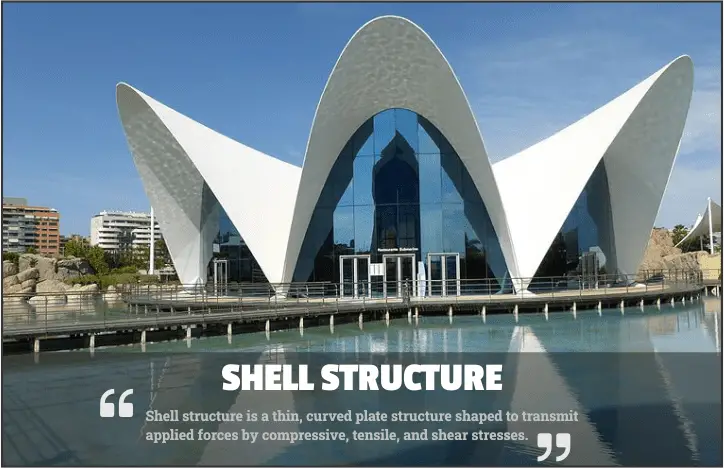Structures
Centre of gravity and stability
The centre of gravity of an object is the point at which we can consider the weight of an object to be concentrated. A seesaw in a children's park and a weighing balance can be an example of the centre of gravity and stability.

.
Types of structures
shell
Gives protection from the outside and also acts as a container. The Sydney Opera House in Australia is an example of a shell structure.

Shell Structure
frame
Made up of different parts joined together to make a strong frame. Our skeleton is a perfect example pf a frame structure it is made up from so many different bones, joints and more.

Frame structure
solid
Only has one part with no spaces in-between. A table, chair, clock, computer, plate, and a vegetable can all be considered a solid structure.

Soild Structure
Forces on structures
Tension, compression, shear, bending and torsion are all forces that act on structures.
Tension Example- Tension forces pull and stretch material in opposite directions, allowing a rope bridge to support itself and the load it carries, which is an example of tension
Compression Example- The lower columns of a skyscraper are squeezed by the heavy weight above them. This squeezing force is called compression.
Shear Example- Weights, mugs and scissors can all be an example of shear.
Bending Example- When a moment or "turning force" is applied to a structural member that is fixed on both ends, such as a pole beam, making it deflect or bend.
Torsion Example- Torsion in civil engineering refers to the twisting or rotational effect applied to structural elements. Some examples include: Torsional loading on bridges due to wind or seismic forces, which can cause twisting stresses on the bridge deck and piers.
This is all the forces on a picture.
Structural Failures
Design Fail
When structures are constructed incorrectly or have architectural mistakes, they increase a chance of failing.
Improper Communication
It's possible that the team in responsible for creating the building was not talking to the architects who create the building blueprints.
Poor Foundations
The base of the building is known as the foundation. Water in the land, sewage leaks, and poor drainage can cause the soil next to the foundation to shift.
Unanticipated Forces
It's likely that the forces acting on the building had not been fully considered by the designers.
Suitablility of materials
Wood
Wooden constructions are strong, hard and sustainable. They may be made resistant to strong earthquakes and winds comparable to hurricanes. Wood can be used to create visually appealing components like walls, ceilings, roofs, and bridges, creating aesthetically beautiful buildings.
Steel
Steel is used because it binds well to concrete, has a similar thermal expansion coefficient and is strong and relatively cost-effective. Reinforced concrete is also used to provide deep foundations and basements and is currently the world's primary building material.
Concrete
Unlike wood or metal, concrete doesn't burn, rust or rot, making it incredibly resistant to the elements; after extreme weather events, concrete structures tend to fare the best.
Safety assets in structures
A sensor is any device that can detect or measure a certain condition. Sensors can be used as a method of detecting unusual stresses placed on a structure. Sensors can serve as an early warning of structural failure. Engineers use sensors to detect building vibrations, which can be monitored using a computer.
Sensors
Structures are designed to carry loads that are much heavier than they will actually ever have to bear.
Some load-bearing devices have maximum load warnings to ensure structural integrity (e.g. a building may have a person capacity or a chair may have a weight capacity).
Load Design
